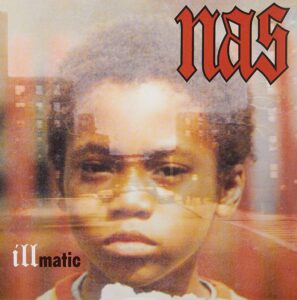Pickleball Champs: Tips for Organizing a Tournament
Pickleball fever has officially taken over America’s courts, and frankly, we’re here for it. This paddle sport that combines elements of tennis, badminton, and ping pong has exploded from retirement communities to mainstream athletics, attracting players of all ages who love its fast-paced action and lower injury risk compared to tennis.
If you’ve caught the pickleball bug and want to bring your community together for some friendly competition, organizing a tournament might be your next great adventure. Whether you’re planning a neighborhood showdown or a more serious competitive event, hosting a successful pickleball tournament requires strategic planning, attention to detail, and a good dose of enthusiasm. The payoff? Creating lasting memories, fostering community connections, and maybe even discovering the next pickleball champion in your area.
We’re suiting up to discuss a few tips for organizing a tournament where you’ll crown the next pickleball champ!
Set a Winning Foundation: Scope, Budget, and Timeline
Before you start dreaming about trophy presentations and victory celebrations, nail down your tournament’s core details. Start by deciding whether you want an intimate 16 player round-robin or a larger bracket-style competition that could accommodate 64 or more participants.
Your budget directly influences every other decision you’ll make. Factor in court rental fees, equipment needs, refreshments, prizes, and marketing materials. A basic local tournament might run anywhere from $500 to $2,000, while larger events can easily climb into the thousands. Don’t forget to account for unexpected expenses—they always pop up.
Timeline planning makes or breaks tournament success. Give yourself at least six to eight weeks for planning and promotion. This buffer allows time to secure venues, spread the word effectively, and handle the inevitable last-minute adjustments that come with event planning.
Find Your Perfect Venue
Location can make or break your tournament experience. Start by scouting local recreation centers, tennis clubs, and dedicated pickleball facilities. Many tennis courts convert easily to pickleball with portable nets, which gives you more venue options.
Consider logistics beyond just court availability. Players need parking, restrooms, and ideally some shade or indoor space for breaks. If you’re planning an outdoor event, creative landscaping that complements your outdoor court can enhance the overall atmosphere and provide natural boundaries for spectator areas.
Visit potential venues during similar weather conditions and times of day when your tournament will run. That gorgeous morning court might turn into a sun-blinded nightmare by afternoon. Ask about backup indoor options if weather becomes a factor, or plan accordingly.
Get Players Excited and Registered
Marketing your tournament starts with understanding your target audience. Are you attracting casual players looking for fun, competitive athletes seeking serious matches, or a mix of both? Your messaging should reflect the tournament’s personality and skill level expectations.
Social media proves invaluable for tournament promotion. Post regularly on local community Facebook groups, Instagram, and NextDoor. Partner with local pickleball groups, sports stores, and recreation centers to spread the word. Word-of-mouth marketing works exceptionally well in the tight-knit pickleball community.
Create a simple registration process that collects essential information: player skill levels, contact details, emergency contacts, and any dietary restrictions if you’re providing food. Online registration platforms streamline this process and help you track numbers in real-time.
Design Your Tournament Structure
Choose a format that matches your venue size and participant numbers. Round-robin tournaments work beautifully for smaller groups, ensuring everyone gets multiple games and maximum court time. Bracket-style elimination tournaments create more dramatic moments but mean some players finish early.
Consider skill-level divisions to keep matches competitive and enjoyable. Many tournaments use ratings like DUPR (Dynamic Universal Pickleball Rating), which is free for anyone to use, or create beginner, intermediate, and advanced categories. Mixed doubles, men’s doubles, women’s doubles, and singles divisions can accommodate different preferences.
Schedule matches with realistic time estimates. Most pickleball games run 15 to 30 minutes, but factor in transition time between matches. Build buffer time into your schedule—tournaments always run longer than planned.
Execute Tournament Day Like a Pro
Tournament day success depends heavily on having the right team in place. Recruit volunteers for registration, scorekeeping, court management, and general troubleshooting. Assign clear responsibilities and provide contact information for key organizers.
Equipment preparation starts the night before. Make sure you have adequate paddles for lending, plenty of pickleballs (they break and disappear), first aid supplies, and backup nets. Create clear signage for courts, registration areas, and restrooms.
Establish a central command station where you can monitor the tournament flow, handle questions, and coordinate with volunteers. This hub becomes your mission control for managing schedule adjustments and resolving any disputes that arise.
Create an Unforgettable Experience
Food and refreshments transform a simple tournament into a community celebration. Partner with local food trucks, set up a potluck-style arrangement, or provide simple snacks and hydration stations. Remember that players need quick energy between matches—think bananas, energy bars, and plenty of water or sports drinks.
Entertainment between matches keeps energy levels high. Consider hiring a local DJ, setting up lawn games for spectators, or organizing fun challenges like accuracy contests or trick shot demonstrations. These additions create a festival atmosphere that participants remember long after the final match.
Photo opportunities matter more than you might expect. Designate someone to capture action shots, group photos, and trophy presentations. These images become marketing gold for future tournaments and give participants lasting memories.
Wrap Up the Tourney With Style
Post-tournament follow-up separates good organizers from great ones. Send thank-you emails to all participants within a few days, including tournament results, photos, and feedback surveys. This communication keeps the positive energy flowing and provides valuable insights for future events.
Gather honest feedback about everything from court conditions to food quality. Players appreciate when organizers ask for their input and actually implement suggestions. This feedback loop helps you continuously improve your tournament offerings.
Recognition extends beyond just tournament winners. Consider awards for best sportspersonship, most improved player, or longest distance traveled. These additional categories make more participants feel valued and create talking points for future tournaments.
Your Championship Legacy Starts Now
Organizing a successful pickleball tournament requires planning, dedication, and flexibility, but the rewards extend far beyond the final score. You’ll create connections within your community, introduce new players to the sport, and establish yourself as a leader in the local pickleball scene.
Start small with your first tournament, learn from the experience, and build on that foundation. Many of the most successful tournament organizers began exactly where you are now—with enthusiasm for the sport and a desire to bring people together. Your next pickleball champ awaits!
Share this content:














Post Comment